In learning 3d graphics programming for games I decided to start off simple by using the Scene Kit 3D API. My first gaming goal was to build a very simplified mimic of MineCraft. A game of just cubes - how hard can it be.
Below is a loop I wrote to place a ride of 100 x 100 cubes (10,000) and the FPS performance was abysmal (~20 FPS). Is my initial gaming goal too much for Scene Kit or is there a better way to approach this?
I have read other topics on StackExchange but don't feel they answer my question. Converting the exposed surface blocks to a single mesh won't work as the SCNGeometry is immutable.
func createBoxArray(scene : SCNScene, lengthCount: Int, depthCount: Int) {
let startX : CGFloat = -(CGFloat(lengthCount) * CUBE_SIZE) + (CGFloat(lengthCount) * CUBE_MARGIN) / 2.0
let startY : CGFloat = 0.0
let startZ : CGFloat = -(CGFloat(lengthCount) * CUBE_SIZE) + (CGFloat(lengthCount) * CUBE_MARGIN) / 2.0
var currentZ : CGFloat = startZ
for z in 0 ..< depthCount {
currentZ += CUBE_SIZE + CUBE_MARGIN
var currentX = startX
for x in 0 ..< lengthCount {
currentX += CUBE_SIZE + CUBE_MARGIN
createBox(scene, x: currentX, y: startY, z: currentZ)
}
}
}
func createBox(scene : SCNScene, x: CGFloat, y: CGFloat, z: CGFloat) {
var box = SCNBox(width: CUBE_SIZE, height: CUBE_SIZE, length: CUBE_SIZE, chamferRadius: 0.0)
box.firstMaterial?.diffuse.contents = NSColor.purpleColor()
var boxNode = SCNNode(geometry: box)
boxNode.position = SCNVector3Make(x, y, z)
scene.rootNode.addChildNode(boxNode)
}
UPDATE 12-30-2014: I modified the code so the SCNBoxNode is created once and then each additional box in the array of 100 x 100 is created via:
var newBoxNode = firstBoxNode.clone()
newBoxNode.position = SCNVector3Make(x, y, z)
This change appears to have increased FPS to ~30fps. The other statistics are as follows (from the statistics displayed in the SCNView):
10K (I assume this is draw calls?) 120K (I assume this is faces) 360K (Assuming this is the vertex count)
The bulk of the run loop is in Rendering (I'm guesstimating 98%). The total loop time is 26.7ms (ouch). I'm running on a Mac Pro Late 2013 (6-core w/Dual D500 GPU).
Given that a MineCraft style game has a landscape that constantly changes based on the players actions I don't see how I can optimize this within the confines of Scene Kit. A big disappointment as I really like the framework. I'd love to hear someone's ideas on how I can address this issue - without that, I'm forced to go with OpenGL.
UPDATE 12-30-2014 @ 2:00pm ET: I am seeing a significant performance improvement when using flattenedClone(). The FPS is now a solid 60fps even with more boxes and TWO drawing calls. However, accommodating a dynamic environment (as MineCraft supports) is still proving problematic - see below.
Since the array would change composition over time I added a keyDown handler to add an even larger box array to the existing and timed the difference between adding the array of boxes resulting in far more calls versus adding as a flattenedClone. Here's what I found:
On keyDown I add another array of 120 x 120 boxes (14,400 boxes)
// This took .0070333 milliseconds
scene?.rootNode.addChildNode(boxArrayNode)
// This took .02896785 milliseconds
scene?.rootNode.addChildNode(boxArrayNode.flattenedClone())
Calling flattenedClone() again is 4x slower than adding the array.
This results in two drawing calls having 293K faces and 878K vertices. I'm still playing with this and will update if I find anything new. Bottom line, with my additional testing I still feel Scene Kit's immutable geometric constraints mean I can't leverage the framework.


